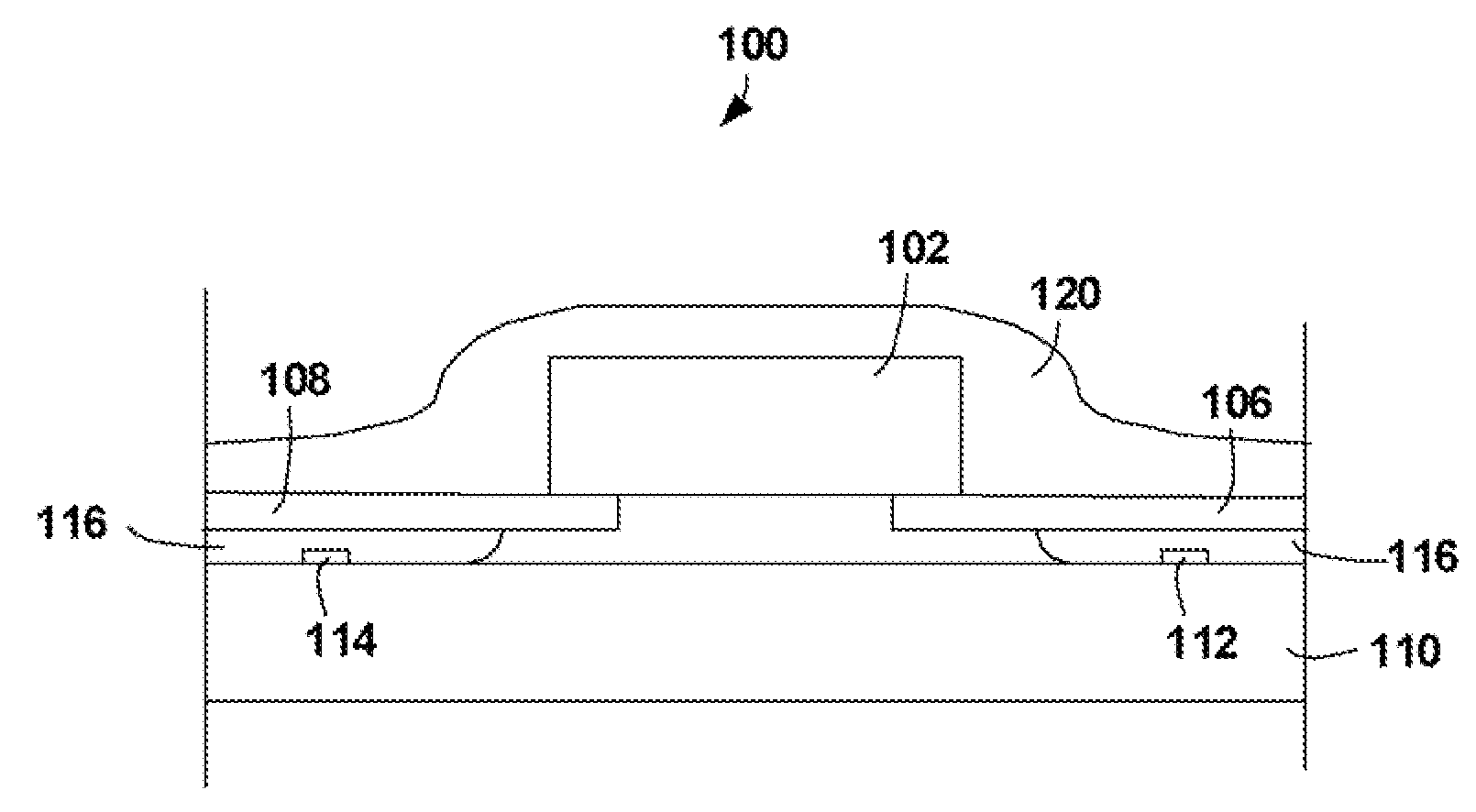Method for forming RFID tags
a technology of rfid tags and rfid tags, which is applied in the near field of read/write/interrogation/identification systems, instruments, and semiconductor/solid-state device details, etc., can solve the problems of strap and antenna failure, additional layer of material to be placed, and requiring a much thicker strap substra
- Summary
- Abstract
- Description
- Claims
- Application Information
AI Technical Summary
Problems solved by technology
Method used
Image
Examples
Embodiment Construction
[0018]One embodiment of the present invention is a RFID tag including a tag substrate 602 with an antenna 604 and a strap substrate 606 with an IC 608, the strap substrate 606 positioned on the tags substrate, the IC 608 being electrically connected to the antenna 604 on the tag substrate 602 through a hole 610 and 612 in the strap substrate.
[0019]The hole 610 and 612 can be filed with a conductive material, such as a conductive adhesive. The conductive adhesive can be positioned on a bond pad of the tag substrate before the strap substrate is attached to the tag substrate. The conductive adhesive can alternately be placed in the hole after the strap substrate is attached to the substrate.
[0020]A strap can be produced with a small hole in the strap substrate in the region of the strap to antenna bond area 605. The strap can be assembled onto the antenna substrate with the chip facing up and away from the antenna substrate. This management means that the connections at bond area 605 ...
PUM
 Login to View More
Login to View More Abstract
Description
Claims
Application Information
 Login to View More
Login to View More - R&D
- Intellectual Property
- Life Sciences
- Materials
- Tech Scout
- Unparalleled Data Quality
- Higher Quality Content
- 60% Fewer Hallucinations
Browse by: Latest US Patents, China's latest patents, Technical Efficacy Thesaurus, Application Domain, Technology Topic, Popular Technical Reports.
© 2025 PatSnap. All rights reserved.Legal|Privacy policy|Modern Slavery Act Transparency Statement|Sitemap|About US| Contact US: help@patsnap.com



